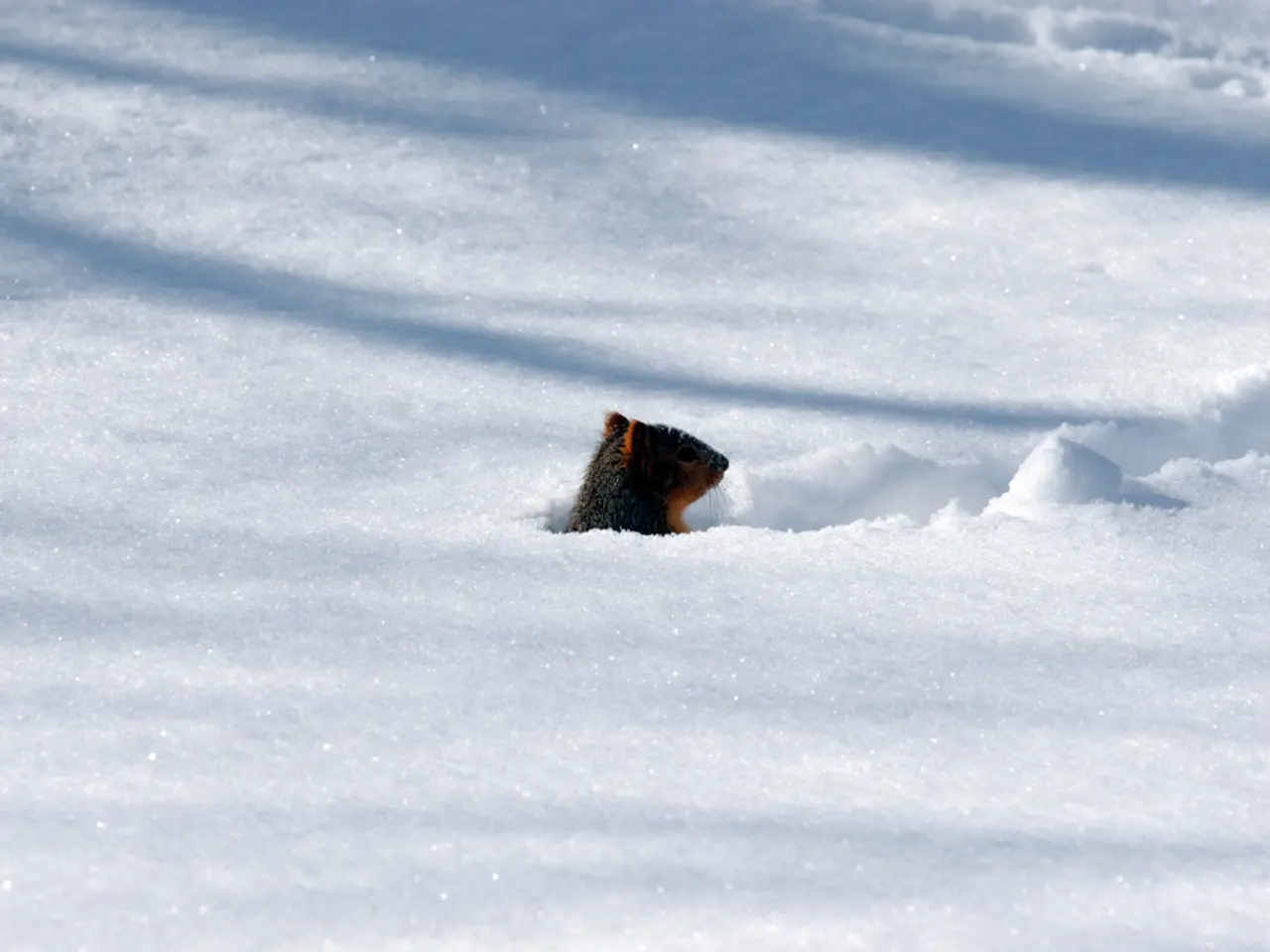Ecology in the Cold: Green Actions for Wintertime
In the heart of winter, it's easy to forget about the environment as we cosy up indoors and enjoy festive gatherings. However, there are numerous ways to maintain a reduced carbon footprint during these colder months. Here are some practical tips to help you make a difference.
Eco-Friendly Winter Sports
Opt for eco-friendly winter sports resorts that have committed to sustainability. Look for facilities that use renewable energy or support eco-friendly initiatives. By choosing these resorts, you can contribute to a greener winter sports experience.
Winterize Your Garden
To reduce the need for excessive watering or synthetic fertilizers during the colder months, consider using organic mulch, covering plants with frost cloths, and ensuring healthy soil through composting. These practices can help your garden thrive while being kind to the environment.
Embrace Virtual Gatherings
Attending virtual holiday parties, meetings, or celebrations can significantly reduce unnecessary travel and carbon footprint. By choosing to connect online, you're helping to create a more sustainable world.
Support Sustainable Brands
Shop from companies that prioritize sustainable production processes, use organic or recycled materials, and ensure fair working conditions. By supporting these brands, you're helping to create a market for more eco-conscious products.
Energy Efficiency at Home
To reduce your environmental footprint during the winter season, focus on improving your home's energy efficiency and minimizing wasteful energy use. Maximize natural heat by opening curtains during the day to let sunlight warm your home and closing them at night to trap warmth. Seal drafts around windows and doors to prevent cold air infiltration, and upgrade insulation in walls, ceilings, and floors to reduce heat loss. Installing a smart thermostat can optimize heating schedules and reduce unnecessary heating, typically saving 10-15% on energy bills. Using energy-efficient LED lighting and low-flow water fixtures also contributes to lowering overall resource consumption.
Eco-Friendly Travel During Winter
Carpooling or taking public transportation reduces the number of cars on the road and is more energy-efficient than driving. Proper tire maintenance, regular engine checks, and driving habits like avoiding excessive idling can improve fuel efficiency and reduce emissions.
Thoughtful Gifting
Instead of buying unnecessary items, consider giving thoughtful, experiences-based gifts, like concert tickets, homemade treats, or a subscription to a sustainable service. These gifts can be more meaningful and have a smaller environmental impact.
Buy Less, Choose Wisely
Focusing on purchasing quality, durable items that will last through the season and beyond can help reduce waste.
Nature Walks and Hiking
Going for walks or hikes in local parks or nature reserves during winter is free, good for your health, and has minimal environmental impact.
Sustainable Winter Travel
Choose destinations and modes of transportation that minimize environmental impact, such as trains and buses, for a more sustainable winter travel experience.
By implementing these strategies, you can create a cozier indoor environment, lower your utility bills, and significantly diminish your carbon footprint in the colder months. Together, we can make a difference in the fight against climate change.
[1] Energy Saving Trust, (2021), Energy Saving Tips for Winter [2] National Geographic, (2019), The Water Footprint of Skiing [3] The Guardian, (2020), How to be More Sustainable This Winter [4] U.S. Department of Energy, (2021), Home Energy Efficiency
- In the winter, opt for eco-friendly winter sports resorts and sustainable travel options to minimize environmental impact, following advice from sources such as The Guardian and the Energy Saving Trust.
- At home, prioritize energy efficiency by using organic mulch in your garden, sealing drafts, insulating walls and floors, and installing a smart thermostat, as suggested by the Energy Saving Trust and the U.S. Department of Energy.
- For a more sustainable lifestyle, choose quality items that last longer and support eco-friendly brands focused on organic materials, sustainability, and fair working conditions, like those recommended in Nature Geographic and various sustainable brands.
- Embrace virtual gatherings for celebrations, meetings, and parties during the winter to significantly reduce unnecessary travel, carbon footprint, and follow the recommendations of the U.S. Department of Energy. Furthermore, consider nature walks, hiking, or thoughtful, experiences-based gifts to further reduce environmental impact, as suggested by The Guardian and national parks and nature reserves.




